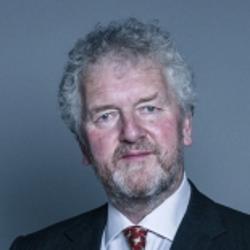Maintained Schools: Special Educational Needs
(asked on 13th May 2019) - View SourceQuestion to the Department for Education:
To ask Her Majesty's Government what percentage of mainstream maintained schools in England offered Key Stage 4 alternatives to GCSEs, suitable for children with special educational, health or social care needs; how many children took such courses, in each of the last five years for which records are available; what are the most popular of those non-GCSE courses; and which organisations create them.
There is not a range of non-GCSE qualifications taught at key stage 4 designed specifically for pupils with special educational needs (SEN). Pupils should have access to a broad and balanced curriculum. The national curriculum inclusion statement states that teachers should set high expectations for every pupil, whatever their prior attainment. Teachers should use appropriate assessment to set targets which are deliberately ambitious. Potential areas of difficulty should be identified and addressed at the outset. Lessons should be planned to address potential areas of difficulty and to remove barriers to pupil achievement. In many cases, such planning will mean that pupils with SEN and disabilities will be able to study the full national curriculum.
The department holds information on entries to non-GCSE qualifications included in the school performance tables, analysis of which is provided below.
The percentage of schools (mainstream[1]) with at least one pupil at the end of key stage 4[2] entering[3] non-GCSE qualifications[4], in each of the last 5 years, is shown in the table below:
| 2017/18[5] | 2016/17 | 2015/16 | 2014/15 | 2013/14 |
Number of mainstream schools | 3,175 | 3,153 | 3,113 | 3,069 | 3,037 |
Percentage of mainstream schools | 95 | 97 | 99 | 99 | 99 |
with at least one pupil entering | |||||
a non-GCSE qualification (%) |
The percentage of mainstream school pupils entering at least one non-GCSE qualification, in each of the last 5 years, is shown in the table below:
| 2017/18 | 2016/17 | 2015/16 | 2014/15 | 2013/14 |
Pupil cohort | 513,356 | 517,756 | 530,580 | 543,314 | 548,290 |
Percentage of mainstream pupils who sat | 40 | 52 | 72 | 71 | 68 |
at least one non-GCSE subject (%) |
Tables showing the 10 most entered non-GCSE qualifications in all state-funded mainstream schools are included in the attached spreadsheet.
[1] State-funded mainstream schools include academies, free schools, city technology colleges and further education colleges with provision for 14 to 16 year olds. They exclude state-funded special schools, independent schools, independent special schools, non-maintained special schools, hospital schools, pupil referral units and alternative provision (AP) (including pupil referral units, AP free schools and AP academies as well as state-funded AP placements in other institutions).
[2] Pupils are identified as being at the end of key stage 4 if they were on roll at the school and in year 11 at the time of the January school census for that year. Age is calculated as at 31 August for that year, and the majority of pupils at the end of key stage 4 were age 15 at the start of the academic year. Some pupils may complete this key stage in an earlier or later year group.
[3] The department does not collect data on which qualifications are offered by schools, instead figures based on which qualifications have been entered by pupils has been used as a proxy. There may be some qualifications offered by a school that no pupils sat exams in for each year.
[4] Figures only include qualifications included in performance tables.
[5] 2017/18 figures are revised figures. All other figures are final figures.

